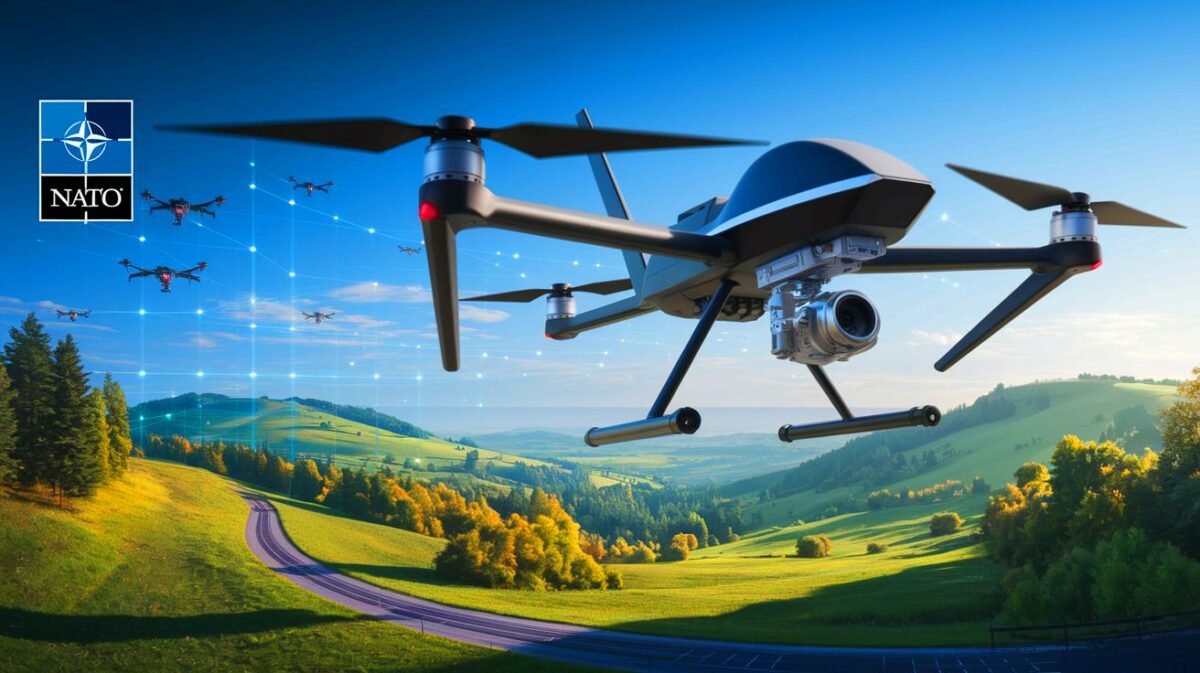| IN A NUTSHELL |
|
In the wake of escalating tensions and the evolving nature of warfare, NATO has embarked on a groundbreaking initiative to fortify its eastern frontiers. This ambitious undertaking, known as the “Drone Wall,” stretches a staggering 1,150 miles from Norway to Poland. It represents a pivotal shift in defense strategy, aiming to counter unconventional threats posed by Russia. As European nations unite under this endeavor, the project symbolizes a move towards increased self-reliance in defense, reducing dependence on the United States. But what does this mean for the future of European security and geopolitical dynamics?
The Costliest Defense Initiative in History
The Drone Wall stands as the most expensive defense project ever undertaken by NATO, with a budget reaching into the billions. This extensive surveillance and counter-drone network serves as an early warning system along the eastern border, spanning approximately 1,850 miles. Its primary objective is to shield Europe from Russia’s unorthodox tactics, including drone incursions, GPS jamming, and cross-border provocations.
Germany is at the helm of this project, supported by six other NATO countries: Estonia, Latvia, Lithuania, Finland, Poland, and Norway. This collaboration reflects a broader trend in European defense policy, emphasizing reduced reliance on the United States. This trend gained momentum following President Donald Trump’s emphasis on increased defense spending by NATO members. Martin Karkour, chief sales officer at Germany’s Quantum Systems, emphasized that this initiative is not just symbolic but a tangible line of defense. The Drone Wall’s technological backbone comprises AI-powered reconnaissance drones, ground sensors, mobile counter-drone platforms, and satellite surveillance, ensuring real-time threat detection and disruption.
Progress Begins in Poland
Under the leadership of Germany’s new chancellor, Friedrich Merz, defense spending has been prioritized, leading to significant reforms. German firms like Quantum Systems are expected to benefit, as they ramp up drone production to meet the demands of this large-scale project. The Baltic states, particularly Estonia, have been proactive in the project’s initial phases, leveraging their expertise in defense technology.
Estonia’s defense industry, coordinated by the Estonian Defense Industry Cluster, contributes crucial technologies to the Drone Wall. Notably, DefSecIntel Solutions has developed the Erishield system, utilizing AI and sensors to neutralize incoming threats. Lithuania’s interior minister, Agnė Bilotaitė, regards the Drone Wall as a new breed of border defense, designed to shield against provocations. Estonia has pledged $13 million over three years to support this initiative.
In Poland, work has already commenced under the Shield-East program, encompassing 430 miles of surveillance infrastructure. Further details will emerge following decisions at the NATO level, marking a significant step towards bolstering NATO’s eastern edge defenses.
Revolutionizing European Defense Strategy
The Drone Wall signifies a paradigm shift in European defense strategy, addressing the evolving nature of warfare. It underscores the importance of integrating traditional military capabilities with modern technologies like drones and electronic warfare. The conflict in Ukraine has demonstrated the critical role of data and airspace control, prompting Europe to secure both domains. The Drone Wall is more than a defense measure; it represents a commitment to a self-sufficient European defense framework.
This project also highlights the increasing importance of defense technology companies, which are at the forefront of innovation. By investing in these technologies, European nations are not only strengthening their defenses but also fostering economic growth and technological advancement. The Drone Wall encapsulates this dual purpose, ensuring security while driving technological progress.
Implications for Future Security and Geopolitics
As the Drone Wall takes shape, it raises important questions about the future of European security and its implications for global geopolitics. By investing heavily in advanced defense technologies, Europe is asserting its independence and capability to address emerging threats. This move may redefine the balance of power within NATO and influence the broader dynamics between Europe, Russia, and the United States.
The Drone Wall serves as a testament to Europe’s determination to protect its sovereignty and security interests. As this project progresses, it will likely catalyze further innovations in defense technology, reshaping the future of warfare. But how will this monumental effort impact NATO’s cohesiveness and the global geopolitical landscape in the years to come?
Did you like it? 4.4/5 (26)









Is this “Drone Wall” really going to make us safer or just cost a whole lot? 🤔